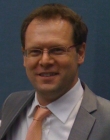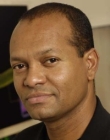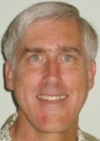|
| |
|
If you
have any questions or need more information, please contact:
SoC@SavantCompany.com
or
949-851-1714 ― Thank
you!
|
|
a
|
|
|
|
|
|
|
|
Microsemi
Keynote
 |
 Paul
Pickle, Senior Vice President, Integrated Circuit Group, Microsemi. Paul
Pickle, Senior Vice President, Integrated Circuit Group, Microsemi.
Keynote: "A New Paradigm: Disruptive SoC Design & Market Strategies."
Bio: Paul Pickle has more than
15 years of experience in the electronics industry, and currently runs
Microsemi’s Integrated Circuit Divisions including the System-on-Chip and
Analog Mixed Signal groups. In this role, Paul leverages the company’s
significant design and technical resources in order to accelerate innovative
new customer solutions and market focused product introductions. He also
plays a key role in defining the strategic direction of the Microsemi, which
provides highly reliable, high-performance semiconductors for defense and
security; aerospace; enterprise and communications; and industrial and
alternative energy applications. Since joining the company in 1998, Paul has
held positions of increasing responsibility including Corporate Vice
President of Field Applications Engineering, and senior positions in both
sales and marketing/product development. Paul’s previous positions
include Director of Marketing for GMT Microelectronics Corporation, and
engineering positions with All American Semiconductor. He holds a Bachelor
of Science in Mechanical Engineering degree with an emphasis on electronics
and controls from the University of South Florida - College of Engineering
in Tampa, Florida.
|
|
|
|
Purdue University
Keynote
 |
 Dr.
Eugenio Culurciello, Associate Professor, Electrical Engineering. Purdue
University. Dr.
Eugenio Culurciello, Associate Professor, Electrical Engineering. Purdue
University.
Keynote: “Vision For Robots, Vehicles And Consumer Electronics: How Close
Are We?”
Abstract: We discuss the
current state of the art in synthetic vision systems for robotics and
consumer applications. We ask and partially answer the following questions:
when will vehicles, consumer electronics, robotic helpers and computing
equipment perform visual tasks that are now only the prerogative of humans?
Where is robotic and artificial vision right now? How close are we to
embedded vision system that perform at the level of humans? When will robot
help our everyday life? We also present the state of the art hardware
systems for embedded vision and discuss their performance in comparison with
general purpose computer processors, graphic cards, programmable hardware
and systems on a chip. We also present the current state-of-the-art work on
neuromorphic hardware models of the mammalian visual system. In particular
systems that model retinal pre-processing and the ventral visual pathway,
with the goal of categorizing, tracking and maintaining a visual memory of
tens of targets. More information can be found here:
http://www.neuflow.org/
Bio: Eugenio Culurciello
(S'97-M'99) received the Ph.D. degree in Electrical and Computer Engineering
in 2004 from the Johns Hopkins University, Baltimore, MD. He is an associate
professor of the Weldon School of Biomedical Engineering at Purdue
University, where he directs the ‘e-Lab’ laboratory. His research interest
is in analog and mixed-mode integrated circuits for biomedical
instrumentation, synthetic vision, bio-inspired sensory systems and
networks, biological sensors, silicon-on-insulator design. Eugenio
Culurciello is the recipient of The Presidential Early Career Award for
Scientists and Engineers (PECASE) and Young Investigator Program from ONR,
the Distinguished Lecturer of the IEEE (CASS), and is the author of the book
"Silicon-on-Sapphire Circuits and Systems, Sensor and Biosensor interfaces"
published by McGraw Hill in 2009.
|
|
|
|
Johns Hopkins University
Keynote
 |
 Dr.
Ralph Etienne-Cummings, Professor Department of Electrical and Computer
Engineering. Johns Hopkins University. Dr.
Ralph Etienne-Cummings, Professor Department of Electrical and Computer
Engineering. Johns Hopkins University.
Keynote: “Designing SoC
That Speak The Same Language as the Nervous System."
Abstract: Key barriers to
permanent adoption and continuous use of prosthetic devices are their
limited functionality and incompatibility with natural human actions. E.g.,
standard upper limb prosthetics require retraining of remaining muscles, or
abnormal contortion of remaining parts of the limb to open/close
non-anthropomorphic manipulators. In 2005 a program was initiated by the US
Government to develop an upper limb prosthetic device that would be neurally
integrated to the body. That is, the prosthetic limb would decode the intent
of the user via motor cortex neural recordings, and feedback sensation by
somatosenory cortex stimulation. The lofty goal was to develop prosthetic
arms that were indistinguishable from “native” ones. As can be expected,
despite the quantum leaps of innovation resulting from the program, the
ultimate goal of the project remains to be achieved. There are many reasons
for the elusiveness of the goal, among them is the need to develop
electronics that interface seamlessly with the nervous system, and
communicate with it in the same “spike-based” and “neural encoding”
language. In this talk, I will describe progress on this front, and project
forward to prosthetic devices that will indeed act and feel like native
ones. In the future, Luke Skywalker’s arm in Star Wars: The Empire Strikes
Back, or extendable memory devices as in Johny Mnumonic will become reality
due to developments in neuromorphic engineering.
Bio: Ralph Etienne-Cummings received his B. Sc. in physics, 1988, from
Lincoln University, Pennsylvania. He completed his M.S.E.E. and Ph.D. in
electrical engineering at the University of Pennsylvania in December 1991
and 1994, respectively. Currently, Dr. Etienne-Cummings is a professor of
electrical and computer engineering, and computer science at Johns Hopkins
University (JHU). He is the former Director of Computer Engineering at JHU
and the Institute of Neuromorphic Engineering (currently administered by
University of Maryland, College Park). He was also the Associate Director
for Education and Outreach of the National Science Foundation (NSF)
sponsored Engineering Research Centers on Computer Integrated Surgical
Systems and Technology at JHU. He has served as Chairman of the IEEE
Circuits and Systems (CAS) Technical Committee on Sensory Systems and on
Neural Systems and Application, and was elected as a member of CAS Board of
Governors from 1/2007 – 1/2009. He was also the General Chair of the IEEE
BioCAS Conference in 2008, and serves on its Steering Committee. He was also
a member of Imagers, MEMS, Medical and Displays Technical Committee of the
ISSCC Conference from 1999 – 2006. He also serves on numerous editorial
boards and was recently appointed Deputy Editor in Chief for the IEEE
Transactions on Biomedical Circuits and Systems. He is the recipient of the
NSF’s Career and Office of Naval Research Young Investigator Program Awards.
In 2006, he was named a Visiting African Fellow and a Fulbright Fellowship
Grantee for his sabbatical at University of Cape Town, South Africa. He was
invited to be a lecturer at the National Academies of Science Kavli
Frontiers Program, held in November 2007. He won the 2010 JHU Applied
Physics Lab R.W. Hart Prize for Best R&D Project in Development. He has also
won publication awards, including the 2011 Best Paper Award for IEEE
Transactions of Biomedical Circuits and Systems, 2003 Best Paper Award of
the EURASIP Journal of Applied Signal Processing and “Best Ph.D. in a
Nutshell” at the IEEE BioCAS 2008 Conference, and has been recognized for
his activities in promoting the participation of women and minorities in
science, technology, engineering and mathematics. His research interest
includes mixed signal VLSI systems, computational sensors, computer vision,
neuromorphic engineering, smart structures, mobile robotics, legged
locomotion and neuroprosthetic devices. He has published ~200 technical
articles, 1 book, 9 book chapters and holds 5 patents (plus 2 pending) on
his work in these subjects.
|
|
|
|
Xilinx
Keynote
 |
 Dr.
Steve Trimberger, Fellow, Circuits & Architectures Group, Xilinx. Dr.
Steve Trimberger, Fellow, Circuits & Architectures Group, Xilinx.
Keynote: “FPGA are Looking
uP”
Abstract: TBA.
Bio: Dr. Steve Trimberger has been employed at Xilinx since 1988. He is
currently a Xilinx Fellow heading the Circuits and Architectures Group in
Xilinx Research Labs in San Jose, California. He was the technical leader
for the XC4000 design automation software, developed a
dynamically-reconfigurable multi-context FPGA, led the architecture
definition group for the Xilinx XC4000X device families and designed the
Xilinx bitstream security functions in the Virtex families of FPGAs. He has
served as Design Methods Chair for the Design Automation Conference, Program
Chair and General Chair for the ACM/SIGDA FPGA Symposium and on the
technical programs of numerous Workshops and Symposia. He has published
three books and dozens of papers on design automation and FPGA
architectures. He has more than 170 patents in IC design, FPGA and ASIC
architecture, CAE and cryptography. His innovations appear today in nearly
all commercial FPGA devices. He is a Fellow of the ACM.
|
|
|
|
|
|
|
|
Selected
Technology
&
Media
Sponsors |
|
* * * * * * *
Back To The Main SoC
Conference Page
Copyright © 2003-2011 by Savant Company Inc. All
Worldwide Rights Reserved.
Wafer images courtesy of Intel Corporation, Micron Technologies & Altera Corporation.
| |
|